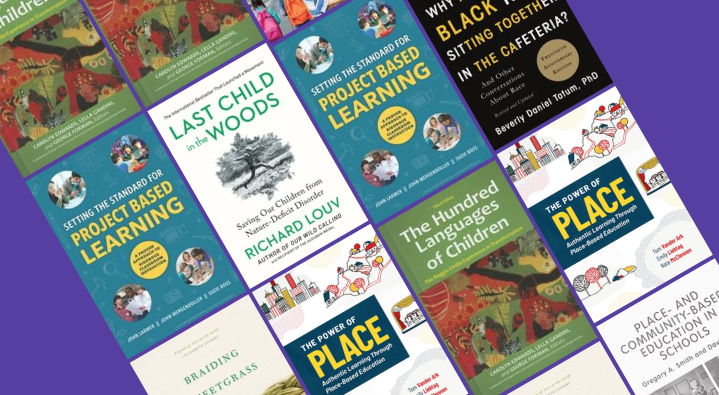In the realm of professional development for place-based education teachers, books are an important, but often overshadowed resource. Many of us tend to gravitate towards more engaging and interactive professional development opportunities like coaching, courses and hands-on teacher workshops. Since most in-person trainings have been cancelled or postponed due to the global surge of COVID-19, educators are turning to books for at-home, self-paced learning, inspiration and growth.
Recommended by Teton Science Schools’ staff and teachers, here are 18 books to inspire your development as a place-based education teacher.
Place-Based Education Books: Getting Started
 The Power of Place: Authentic Learning Through Place-Based Education by Tom Vander Ark, Emily Liebtag & Nate McClennan
The Power of Place: Authentic Learning Through Place-Based Education by Tom Vander Ark, Emily Liebtag & Nate McClennan
Dispelling the notion that place-based education is an approach limited to those who can afford it, the authors (including Teton Science Schools’ VP of Education and Innovation, Nate McClennan) describe how schools in diverse contexts–urban and rural, public and private–have adopted place-based programs as a way to better engage students and attain three important goals of education: student agency, equity, and community.
Aimed at educators from Preschool through high school, The Power of Place is a definitive guide to developing programs that will lead to successful outcomes for students, more fulfilling careers for teachers, and lasting benefits for communities.
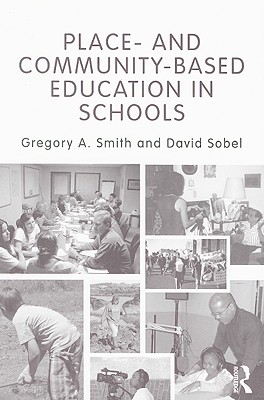 Place- and Community-based Education in Schools by Greg Smith & David Sobel
Place- and Community-based Education in Schools by Greg Smith & David Sobel
Place- and Community-based Education in Schools — an approach to teaching and learning that starts with the local — addresses two critical gaps in the experience of many children growing up in the United States: contact with the natural world and contact with community. It offers a way to extend young people’s attention beyond the classroom to the world as it actually is, and to engage them in the process of devising solutions to the social and environmental problems they will confront as adults.
Envisioned as a primer and guide for educators and members of the public interested in incorporating the local into schools in their own communities, this book explains the purpose and nature of place- and community-based education and provides multiple examples of its practice.
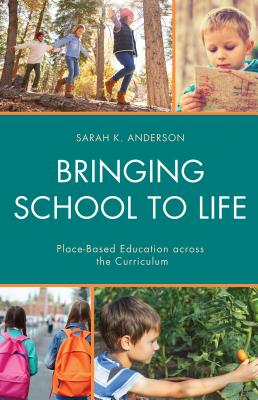 Bringing School to Life: Place-Based Education Across the Curriculum by Sarah Anderson
Bringing School to Life: Place-Based Education Across the Curriculum by Sarah Anderson
The place-based approach brings students into their communities to learn necessary content and skills by working to meet the needs of local agencies and organizations. Students are more engaged because they know they are doing real work, teachers are reinvigorated by creating exciting learning opportunities, and the school takes on a more active role in the community. At the heart of this process is the place itself: the land, the history, and the culture.
This book offers insights into how to build a place-based program across the K-8 grades. Anderson addresses key elements such as mapping, local history, citizen & community science, integrated curricula, and more. Additionally, Anderson suggests strategies for building community partnerships and implementation for primary grades.
Place-Based Education Books for Early Childhood & Elementary Educators
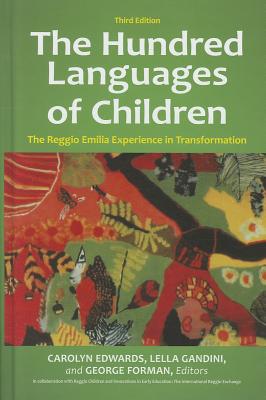 The Hundred Languages of Children: The Reggio Emilia Experience in Transformation by George Forman, Carolyn Edwards & Lella Gandini
The Hundred Languages of Children: The Reggio Emilia Experience in Transformation by George Forman, Carolyn Edwards & Lella Gandini
Educators in Reggio Emilia, Italy, use a distinctive, innovative approach that supports children’s well-being and fosters their intellectual development through a systematic focus on symbolic representation. From birth through age six, young children are encouraged to explore their environment and express their understanding through many modes of expression or “languages,” including verbal communication, movement, drawing, painting, sculpture, shadow play, collage, and music. This organic strategy has been shown to be highly effective, as the children in Reggio Emilia display surprising examples of symbolic skill and creativity.
In this book, the authors provide the reader with a comprehensive introduction to the Reggio Emilia experience, and address three of its central themes: teaching and learning through relationships; the hundred languages of children, and how this concept has evolved; and integrating documentation into the process of observing, reflecting, and communicating.
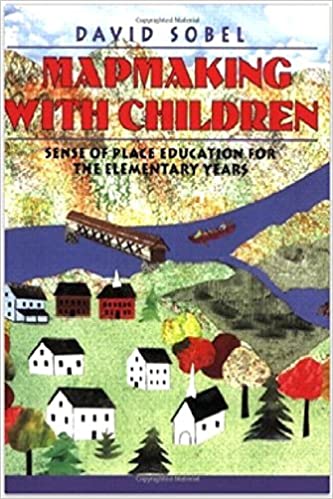 Mapmaking with Children: Sense of Place Education for the Elementary Years by David Sobel
Mapmaking with Children: Sense of Place Education for the Elementary Years by David Sobel
Mapmaking with Children presents an inspired alternative to geography education. Maintaining that there is no substitute for hands-on experience, David Sobel places the initial emphasis on local projects — projects that begin in students’ own backyards and communities, projects that provide a sense of place.
Mapmaking, as Sobel uses it, has relevance across the curriculum. In addition to appealing to social studies teachers, this book will be of interest to science teachers, language arts teachers, and math teachers looking for new ways to invigorate the curriculum.
Project Based Learning Books
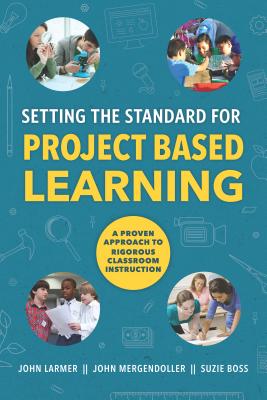
Setting the Standard for Project Based Learning: A Proven Approach to Rigorous Classroom Instructionby John Larmer, John Mergendoller & Suzie Boss
Today’s projects need to be rigorous, engaging, and in-depth, and they need to have student voice and choice built in. Such projects require careful planning and pedagogical skill. The authors –leaders at the respected Buck Institute for Education — take readers through the step-by-step process of how to create, implement, and assess PBL using a classroom-tested framework.
By successfully implementing PBL, teachers can not only help students meet standards but also greatly improve their instruction and make school a more meaningful place for learning. Both practical and inspirational, this book is an essential guide to creating classrooms and schools where students–and teachers–excel.
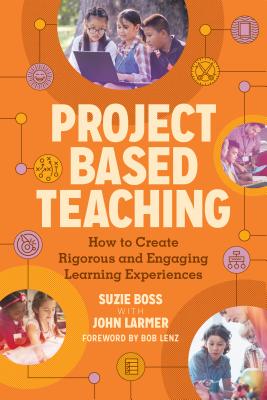
Project Based Teaching: How to Create Rigorous and Engaging Learning Experiencesby Suzie Boss and John Larmer Larmer
It’s no secret that in today’s complex world, students face unparalleled demands as they prepare for college, careers, and active citizenship. However, those demands won’t be met without a fundamental shift from traditional, teacher-centered instruction toward innovative, student-centered teaching and learning. For schools ready to make such a shift, project-based learning (PBL) offers a proven framework to help students be better equipped to tackle future challenges.
In this book, Suzie Boss and John Larmer build on the framework for Gold Standard PBL originally presented in Setting the Standard for Project Based Learning and explore the seven practices integral to Project Based Teaching. For each practice, the authors present a wide range of practical strategies and include teachers’ reflections about and suggestions from their classroom experiences.
Place-Based Education Books on Nature
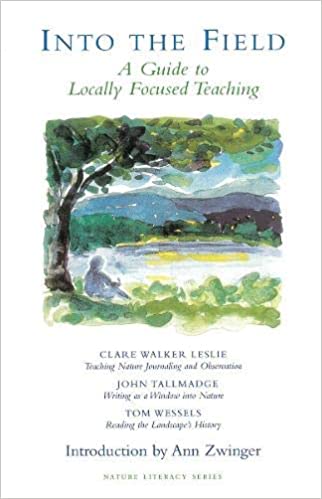
Into the Field: A Guide to Locally Focused Learningby Claire Walker Leslie, John Tallmadge, & Tom Wessels, with an introduction by Ann Zwinger
Into the Field provides teachers with curriculum ideas for taking their students out of doors. The book is both theoretical and practical, combining pedagogical background on why field work enhances educational experiences with the nuts and bolts details of how one gets started. “A place is nothing more than a space with a story, and the basic question in all nature writing is, ‘What happened here?’”
Stories in the Land: A Place-Based Environmental Education Anthology by The Orion Society
This book elaborates on The Orion Society’s mission to advance environmental, place-based education. This collection of stories from teachers in the field is insightful and provides concrete examples of how environmental education can be built into classroom curriculum no matter what part of the country you’re from, what age/grade you teach and what sort of financial restraints are placed on the school.
The most inspiring part of the book was hearing how teachers dramatically impacted the lives of their students by introducing them to the outdoors. The countless student success stories are uplifting, and make me hopeful that my children are taught by individuals with the same appreciation for the environment as those in this book.
Each chapter concluded with a lesson plan that other teachers could implement in their classroom.
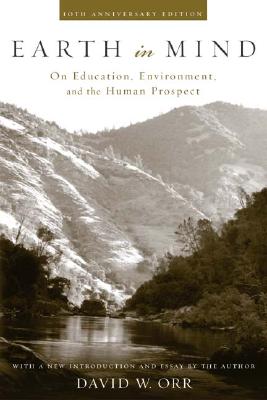
Earth in Mind: On Education, Environment, and the Human Prospectby David Orr
In Earth in Mind, Orr focuses not on problems in education, but on the problem of education. Much of what has gone wrong with the world, he argues, is the result of inadequate and misdirected education that alienates us from life in the name of human domination; causes students to worry about how to make a living before they know who they are; overemphasizes success and careers; separates feeling from intellect and the practical from the theoretical and deadens the sense of wonder for the created world. The crisis we face, Orr explains, is one of mind, perception, and values. It is, first and foremost, an educational challenge.

Last Child in the Woods: Saving Our Children from Nature-Deficit Disorderby Richard Louv
As children’s connections to nature diminish and the social, psychological, and spiritual implications become apparent, new research shows that nature can offer powerful therapy for such maladies as depression, obesity, and attention deficit disorder. Environment-based education dramatically improves standardized test scores and grade-point averages and develops skills in problem solving, critical thinking, and decision making. Anecdotal evidence strongly suggests that childhood experiences in nature stimulate creativity.
In Last Child in the Woods, Louv talks with parents, children, teachers, scientists, religious leaders, child-development researchers, and environmentalists who recognize the threat and offer solutions. Louv shows us an alternative future, one in which parents help their kids experience the natural world more deeply–and find the joy of family connectedness in the process.
Books for Informing Culturally Competent & Inclusive Classrooms
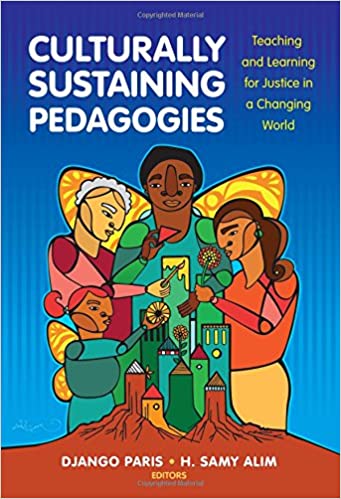
Culturally Sustaining Pedagogies: Teaching and Learning for Justice in a Changing Worldby Django Paris and H. Samy Alim
Culturally Sustaining Pedagogies raises fundamental questions about the purpose of schooling in changing societies. Bringing together an intergenerational group of prominent educators and researchers, this volume engages and extends the concept of culturally sustaining pedagogy (CSP) –teaching that perpetuates and fosters linguistic, literate, and cultural pluralism as part of schooling for positive social transformation.
The authors propose that schooling should be a site for sustaining the cultural practices of communities of color, rather than eradicating them. Chapters present theoretically grounded examples of how educators and scholars can support Black, Indigenous, Latinx, Asian/Pacific Islander, South African, and immigrant students as part of a collective movement toward educational justice in a changing world.
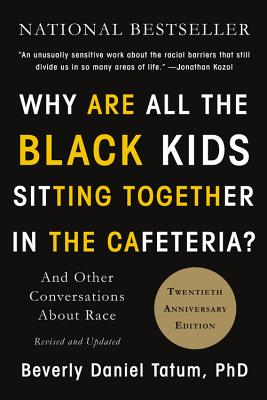
Why Are All the Black Kids Sitting Together in the Cafeteria?By Beverly Daniel Tatum, PhD
Walk into any racially mixed high school and you will see Black, White, and Latino youth clustered in their own groups. Is this self-segregation a problem to address or a coping strategy? Beverly Daniel Tatum, a renowned authority on the psychology of racism, argues that straight talk about our racial identities is essential if we are serious about enabling communication across racial and ethnic divides. These topics have only become more urgent as the national conversation about race is increasingly acrimonious. This fully revised edition is essential reading for anyone seeking to understand the dynamics of race in America.
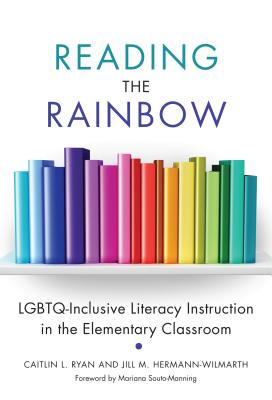
Reading the Rainbow: LGBTQ Inclusive Literacy in the Elementary Classroomby Caitlin L. Ryan & Jill M. Hermann-Wilmarth
Drawing on examples of teaching from elementary school classrooms, this timely book for practitioners explains why LGBTQ-inclusive literacy instruction is possible, relevant, and necessary in grades K-5.
The authors show how expanding the English language arts curriculum to include representations of LGBTQ people and themes will benefit all students, allowing them to participate in a truly inclusive classroom. The text describes three different approaches that address the limitations, pressures, and possibilities that teachers in various contexts face around these topics. The authors make clear what LGBTQ-inclusive literacy teaching can look like in practice, including what teachers might say and how students might respond.
Reading the Rainbow is designed to be interactive, providing readers with opportunities to consider these new approaches with respect to their own classrooms and traditional literacy instruction.
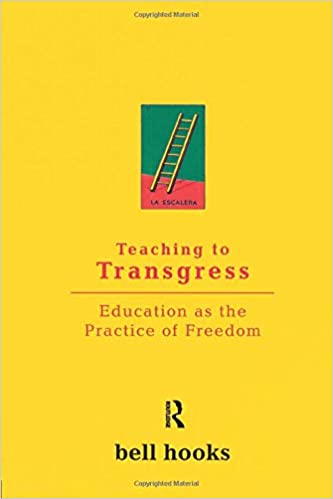
Teaching to Transgress: Education as the Practice of Freedomby bell hooks
In Teaching to Transgress, bell hooks — writer, teacher, and insurgent Black intellectual — writes about a new kind of education, education as the practice of freedom. Teaching students to “transgress” against racial, sexual, and class boundaries in order to achieve the gift of freedom is, for hooks, the teacher’s most important goal.
bell hooks speaks to the heart of education today: how can we rethink teaching practices in the age of multiculturalism? What do we do about teachers who do not want to teach, and students who do not want to learn? How should we deal with racism and sexism in the classroom?
Full of passion and politics, Teaching to Transgress combines a practical knowledge of the classroom with a deeply felt connection to the world of emotions and feelings. This is the rare book about teachers and students that dares to raise questions about eros and rage, grief and reconciliation, and the future of teaching itself. “To educate is the practice of freedom,” writes bell hooks, “is a way of teaching anyone can learn.” Teaching to Transgress is the record of one gifted teacher’s struggle to make classrooms work.
Books that Explore Connection to Place, Nature & Culture
Yard Work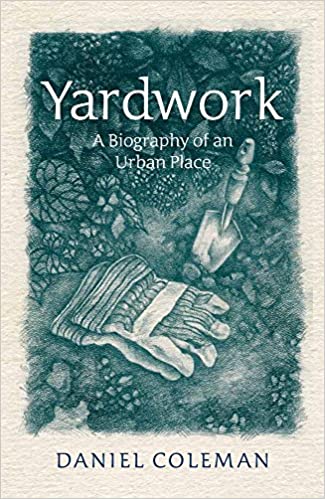 by Daniel Coleman
by Daniel Coleman
How can you truly belong to a place? What does being at home mean in a society that has always celebrated the search for greener pastures? And can a newcomer ever acquire the deep understanding of the land that comes from being part of a culture that has lived there for centuries?
When Daniel Coleman came to Hamilton to take a position at McMaster University, he began to ask himself these kinds of questions, and Yardwork: A Biography of an Urban Place is his answer. In this exploration of his garden – which Coleman deftly situated in the complicated history of Cootes Paradise, off of Hamilton Harbour – the author pays close attention to his small plot of land sheltered by the Niagara Escarpment. Coleman chronicles enchanting omnivorous deer, the secret life of water and the ongoing tension between human needs and the environment. These, along with his careful attention to the perspectives and history of the Six Nations, create a beguiling portrait of a beloved space.
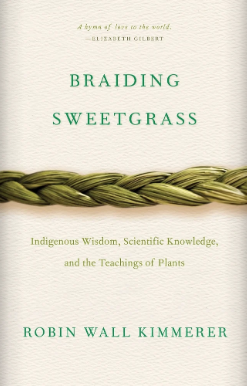
Braiding Sweetgrass: Indigenous Wisdom, Scientific Knowledge and the Teachings of Plantsby Robin Wall Kimmerer
As a botanist, Robin Wall Kimmerer has been trained to ask questions of nature with the tools of science. As a member of the Citizen Potawatomi Nation, she embraces the notion that plants and animals are our oldest teachers. In Braiding Sweetgrass, Kimmerer brings these two lenses of knowledge together to take us on “a journey that is every bit as mythic as it is scientific, as sacred as it is historical, as clever as it is wise” (Elizabeth Gilbert).
Drawing on her life as an indigenous scientist, and as a woman, Kimmerer shows how other living beings — asters and goldenrod, strawberries and squash, salamanders, algae, and sweetgrass — offer us gifts and lessons, even if we’ve forgotten how to hear their voices. In reflections that range from the creation of Turtle Island to the forces that threaten its flourishing today, she circles toward a central argument: that the awakening of ecological consciousness requires the acknowledgment and celebration of our reciprocal relationship with the rest of the living world.
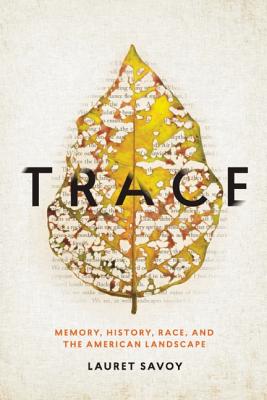
Trace: Memory, History, Race, and the American Landscapeby Lauret Savoy
In this provocative and powerful mosaic of personal journeys and historical inquiry across a continent and time, Savoy explores how the country’s still unfolding history, and ideas of “race,” have marked her and the land. From twisted terrain within the San Andreas Fault zone to a South Carolina plantation, from national parks to burial grounds, from “Indian Territory” and the U.S.-Mexico Border to the U.S. capital, Trace grapples with a searing national history to reveal the often unvoiced presence of the past.
In distinctive and illuminating prose that is attentive to the rhythms of language and landscapes, she weaves together human stories of migration, silence, and displacement, as epic as the continent they survey, with uplifted mountains, braided streams, and eroded canyons. Gifted with this manifold vision, and graced by scientific and lyrical diligence, she delves through fragmented histories — natural, personal, cultural — to find shadowy outlines of other stories of place in America.

